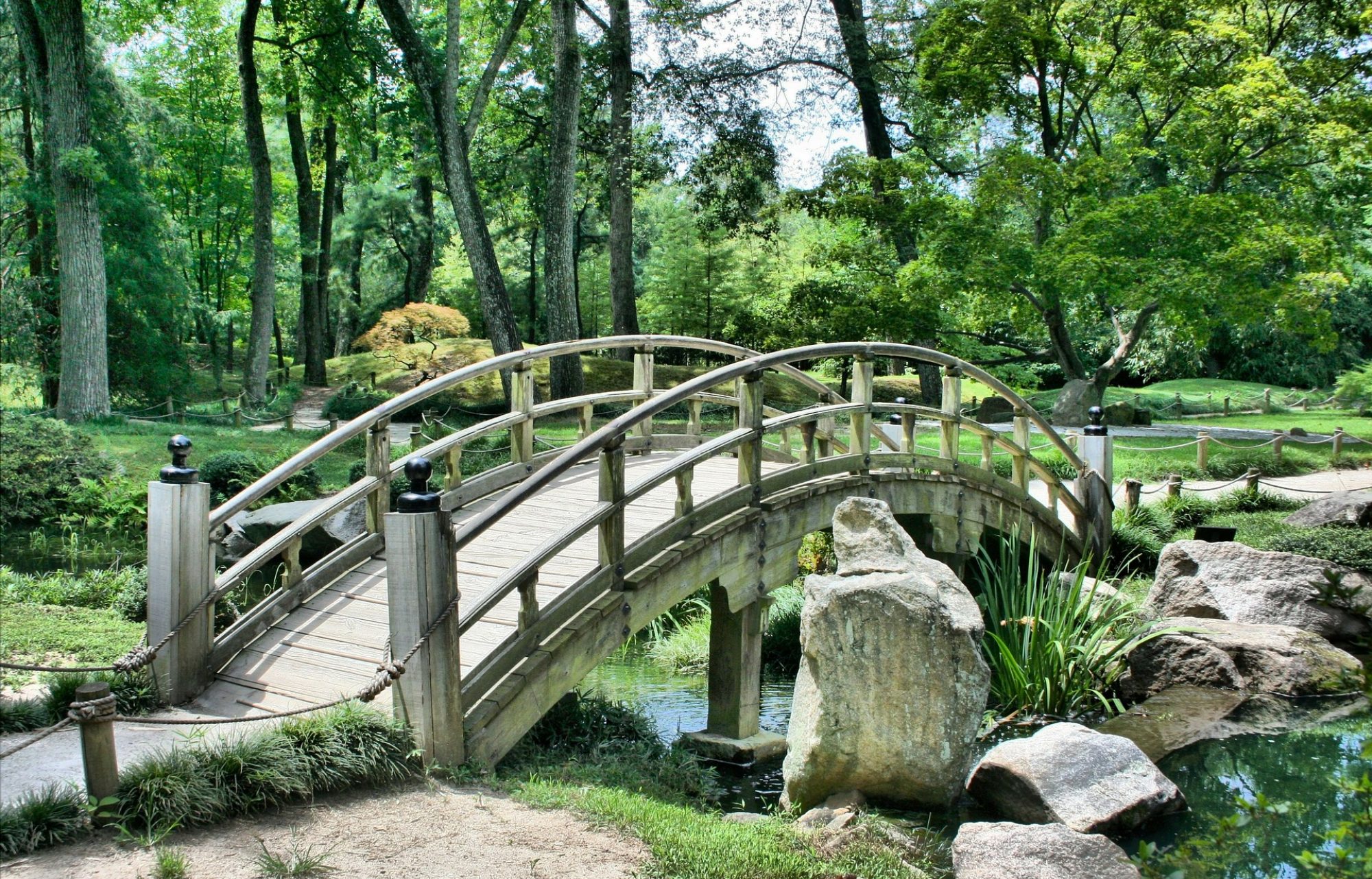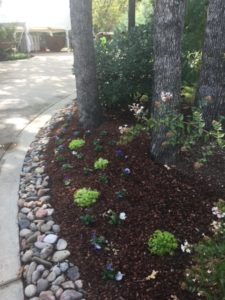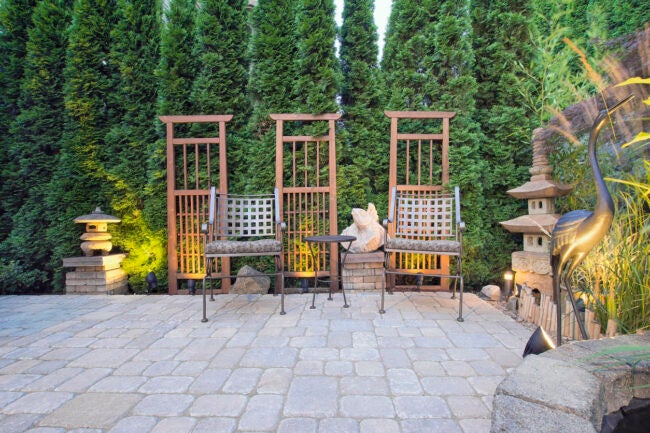Landscape design in Dallas-Ft. Worth is a complex process that involves many different factors, and one of the most critical considerations is proper drainage. Without adequate drainage, your outdoor space can become a breeding ground for mold, insects, and other pests and suffer from costly water damage to landscaping and infrastructure.
Backyard landscaping design requires careful planning to ensure that your space is not only aesthetically pleasing but also functional and practical. This is where proper drainage comes into play – it helps to prevent water accumulation and damage, keeping your outdoor space in top condition. Today, let’s explore the importance of proper drainage in landscape design and maintenance, focusing on backyard landscaping design.
Understanding Drainage in Landscape Design
Proper drainage is a crucial component of landscape design in DFW. Drainage refers to removing excess water from an area, which plays a critical role in maintaining the health and beauty of outdoor spaces.
What is Drainage?
Drainage is the process of removing excess water from an area to prevent water accumulation, which can lead to water damage and other negative consequences. Proper drainage is essential for landscape design because it helps ensure that water is directed away from your property, preventing damage to your landscaping and infrastructure.
Types of Drainage Systems
Several types of drainage systems are commonly used in landscape design, each with unique advantages and disadvantages. Some of the most common types of drainage systems include:
Surface Drainage
This type of drainage system involves using channels or ditches to direct water away from an area. It is particularly effective for areas with a slope or uneven terrain, as it allows water to flow naturally away from your property.
French Drain
A French drain is a trench filled with gravel or rock that directs water away from an area. It is particularly effective for areas with high water tables or heavy rainfall.
Subsurface Drainage
Subsurface drainage involves the installation of pipes or channels beneath the ground’s surface to direct water away from an area. This drainage system is particularly effective for areas with poor soil drainage.
Combination Drainage
A combination drainage system uses a combination of surface, subsurface, and French drain techniques to manage water runoff effectively. This drainage system is particularly effective for areas with complex terrain and heavy rainfall.
Factors Affecting Drainage in Landscape Design
Several factors can affect drainage in landscape design, including:
Soil Type
The soil type on your property can affect drainage, with heavy clay soils being more prone to water accumulation than sandy soils.
Slope
The slope of your property can affect drainage, with areas that are flat or have a low slope being more prone to water accumulation than areas with a steeper slope.
Vegetation
The type and density of vegetation on your property can also affect drainage, with heavily vegetated areas more prone to water accumulation than areas with less vegetation.
What Are The Negative Effects of Poor Drainage in Landscape Design?
Poor drainage can have a significant negative impact on both the aesthetics and functionality of your outdoor space. Understanding the potential consequences of poor drainage can help you appreciate the importance of investing in an effective drainage system for your landscape design in Toronto.
Damage to Landscape
Soil Erosion
Soil erosion can occur when excess water flows across the surface of your property, carrying away valuable topsoil and exposing plant roots. Erosion can lead to reduced soil fertility and increased soil compaction, making it more difficult for plants to absorb nutrients and water.
Drowning of Plants
Over-saturation of soil can also lead to plants drowning, as they cannot access the oxygen they need to survive. This can result in dead or dying foliage, stunted growth, and even complete loss of plant life.
Nutrient Loss
Excess water can also leach valuable nutrients from the soil, such as nitrogen, phosphorus, and potassium. This can lead to nutrient deficiencies in your plants, reducing their overall health and growth potential.
Weed Growth
Poor drainage can create a favorable environment for weed growth, as the excess moisture can help weed seeds germinate and thrive. This growth can lead to increased resource competition, making it harder for your desired plants to grow and thrive.
Damage to Infrastructure
Foundation Damage
Excess water can cause damage to the foundation of your property, leading to cracks, shifting, and other structural issues. This can compromise the safety and stability of your home, as well as reduce its overall value.
Damage to Hardscaping
Poor drainage can also cause damage to hardscaping features such as patios, walkways, and retaining walls. Bad drainage can result in cracks, sinking, and other issues, which can be unsightly and potentially hazardous.
Damage to Drainage Systems
Existing drainage systems, such as French drains, downspouts, and gutters, can become overwhelmed by excess water, leading to clogs, backups, and other issues. This can reduce the effectiveness of your drainage system, making it less able to protect your property from water damage.
Health Risks
Mosquitoes and Other Pests
Standing water can create an ideal breeding ground for mosquitoes and other pests, increasing the risk of disease transmission. Mosquitoes are known carriers of several diseases, including West Nile virus and Zika virus, which can have serious health consequences.
Mold and Mildew
Excess moisture can lead to the growth of mold and mildew, which can cause respiratory problems and other health issues. Mold and mildew are common allergens that can trigger coughing, sneezing, and headaches.
What Are The Benefits of Proper Drainage in Landscape Design?
Proper drainage is essential for maintaining the health and beauty of your outdoor space. In addition to preventing negative effects like soil erosion and infrastructure damage, proper drainage also offers a range of benefits that can enhance the overall value of your property.
Increased Aesthetic Value
Healthy Plants
Proper drainage ensures that plants can access the water and nutrients they need to thrive. When plants receive the right amount of water and nutrients, they are more likely to grow lush foliage and vibrant flowers, enhancing the overall beauty of the landscape.
Reduced Erosion
Effective drainage can help reduce soil erosion, preserving the integrity of your property and preventing unsightly bare patches or exposed roots. When soil is properly drained, it retains its structure and prevents erosion caused by heavy rain or other weather events.
Reduced Weed
Proper drainage can also help reduce weed growth by preventing soil over-saturation. Weeds thrive in moist environments, so a well-drained landscape is less likely to harbor unwanted weeds, creating a cleaner, more manicured appearance for your landscape.
Protection of Infrastructure
Foundation Protection
Proper drainage prevents water from pooling near a home’s foundation, protecting it from damage such as cracking and shifting. When water is allowed to pool around the foundation of a home, it can cause severe damage, compromising the property’s structural integrity.
Hardscaping Protection
Effective drainage can also protect hardscaping features such as patios, walkways, and retaining walls, ensuring longevity and reducing costly repairs. Poor drainage can cause water to accumulate around hardscaping features, leading to damage and decay over time.
Drainage System Protection
Proper drainage effectively channels excess water away from a property, protecting existing drainage systems and reducing the risk of clogs, backups, and other issues. When water is allowed to accumulate in drainage systems, it can cause blockages, leading to costly repairs or even system failure.
Increased Property Value
Curb Appeal
A well-designed and maintained landscape with proper drainage significantly increases the curb appeal of a property, making it more attractive to potential buyers. A lush, well-maintained landscape with proper drainage adds to the overall beauty of a property, making it more appealing to those searching for a new home.
Home Value
In addition to enhancing the appearance of a property, a well-designed landscape with proper drainage can also increase its overall value, making it a wise investment for the future. A well-maintained landscape with good drainage is more likely to be viewed as valuable for its beauty and property infrastructure protection.
Incorporating Drainage into Backyard Landscaping Design
Importance of Drainage in Backyard Landscaping Design
Prevents Standing Water
Backyard landscaping design must incorporate proper drainage techniques to prevent standing water, which can create a breeding ground for insects and bacteria.
Protects plants
Proper drainage helps to protect plants from root rot, which can occur when soil is constantly saturated with water.
Prevents erosion
Drainage techniques can also help prevent erosion, damaging the structure and foundation of the backyard landscaping design.
Techniques for Incorporating Drainage into Backyard Landscaping Design
Grading
The backyard should be graded to slope away from the home’s foundation, allowing water to flow away from the property.
French drains
A French drain is a gravel-filled trench that redirects water away from the property. It can be incorporated into the landscaping design without being visible.
Rain gardens
A rain garden is a planted depression in the backyard that collects and filters rainwater runoff. It can be an attractive and eco-friendly addition to the landscaping design.
Retaining walls
Retaining walls can be used to manage water flow and prevent erosion. They can also add a unique design element to the backyard landscaping.
By incorporating proper drainage techniques into backyard landscaping design, homeowners can protect their investment and create a functional and aesthetically pleasing outdoor space.
Maintenance of Drainage Systems in Landscape Design
Proper maintenance of drainage systems is crucial to ensure that they function efficiently and effectively. Neglecting maintenance can lead to significant damage to your landscape and infrastructure. This section will discuss the importance of maintaining drainage systems and some techniques for keeping them in optimal condition.
Importance of maintaining drainage systems
Regular maintenance of drainage systems helps to prevent blockages, overflows, and other issues that can lead to costly repairs. Keeping the system clear of debris allows water to flow freely and drain away from your property. Neglecting maintenance can cause water to pool in low-lying areas, creating a breeding ground for mosquitoes and other pests. It can also damage the integrity of your landscape, causing erosion and plant death.
Techniques for maintaining drainage systems
Regular inspection
Regularly inspect your drainage system to check for signs of damage or blockages. Look for any signs of erosion, standing water, or unusual dampness in the soil.
Clear debris
Remove any debris or vegetation accumulated in the drainage system. This can be done using a rake, a leaf blower, or a pressure washer.
Flush the system
Use a garden hose to flush the drainage system periodically. This will help remove any remaining debris and ensure water can flow freely.
Repair damage
If you notice any damage to your drainage system, repair it immediately to prevent further damage. This may involve replacing damaged pipes or fixing leaks.
Where to Find Experts In Landscape Design? Landsape Innovations is the company to call when you need solutions to your landscaping challenges. Give us a call TODAY!

 Every year, we see new trends arise and dominate the landscape design scene while we bid goodbye to the ones that have been here for a while. So in 2023, in terms of landscape design, what are the trends that landscaping companies and designers predict? Let us have a look and find out what you might need to add to your landscape.
Every year, we see new trends arise and dominate the landscape design scene while we bid goodbye to the ones that have been here for a while. So in 2023, in terms of landscape design, what are the trends that landscaping companies and designers predict? Let us have a look and find out what you might need to add to your landscape.














10. Gorgeous Grays
This secluded patio off a living room is a tranquil retreat at this Melbourne, Australia, home. Interior designer Frances Cosway of White Pebble Interiors added luxe outdoor seating and stylish side tables that play off the cool gray and black tones of the home’s exterior and nearby pizza oven. A large staghorn fern, smaller plants and a circular grass mat add a subtle amount of greenery.
Shop for outdoor furnishings on Houzz